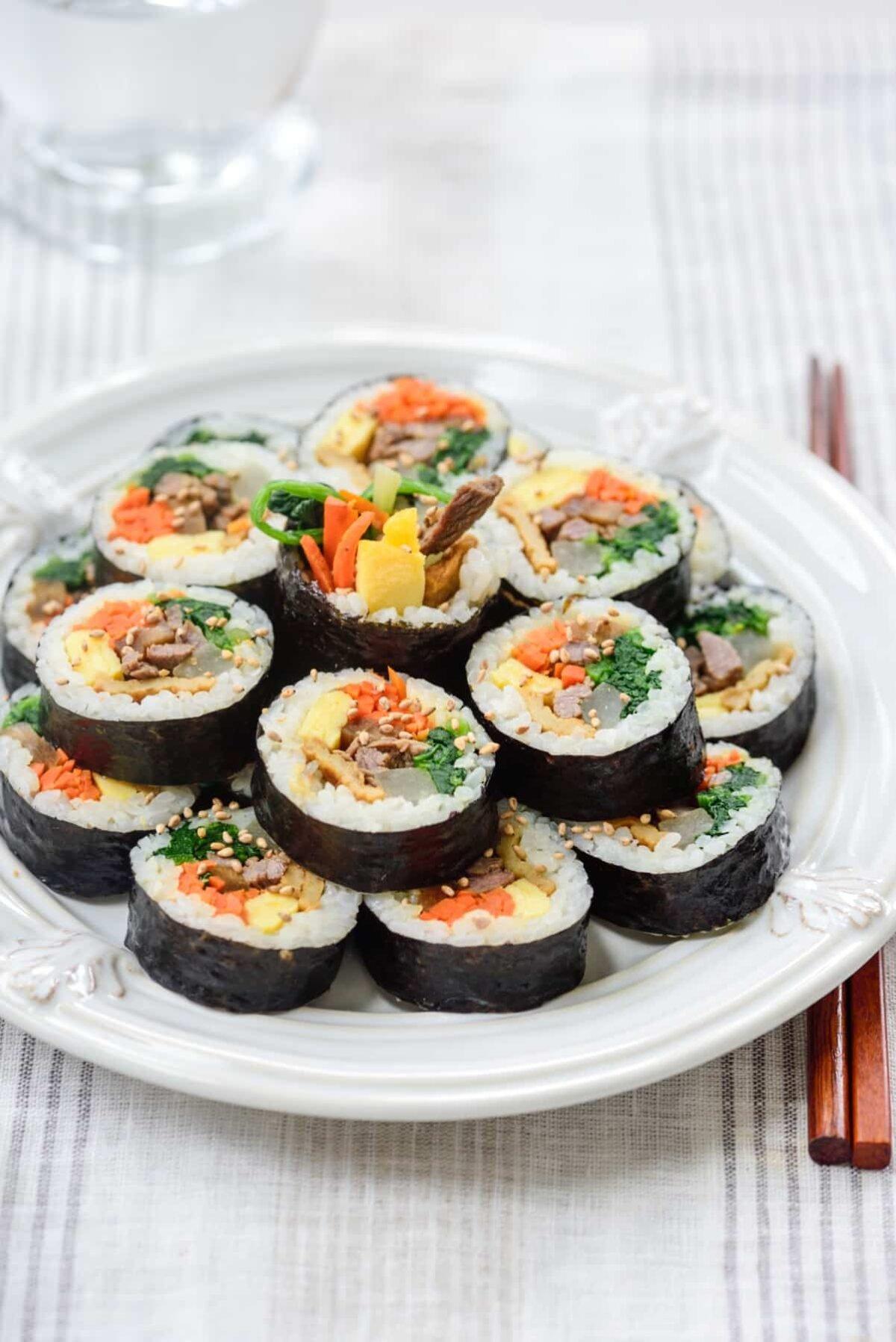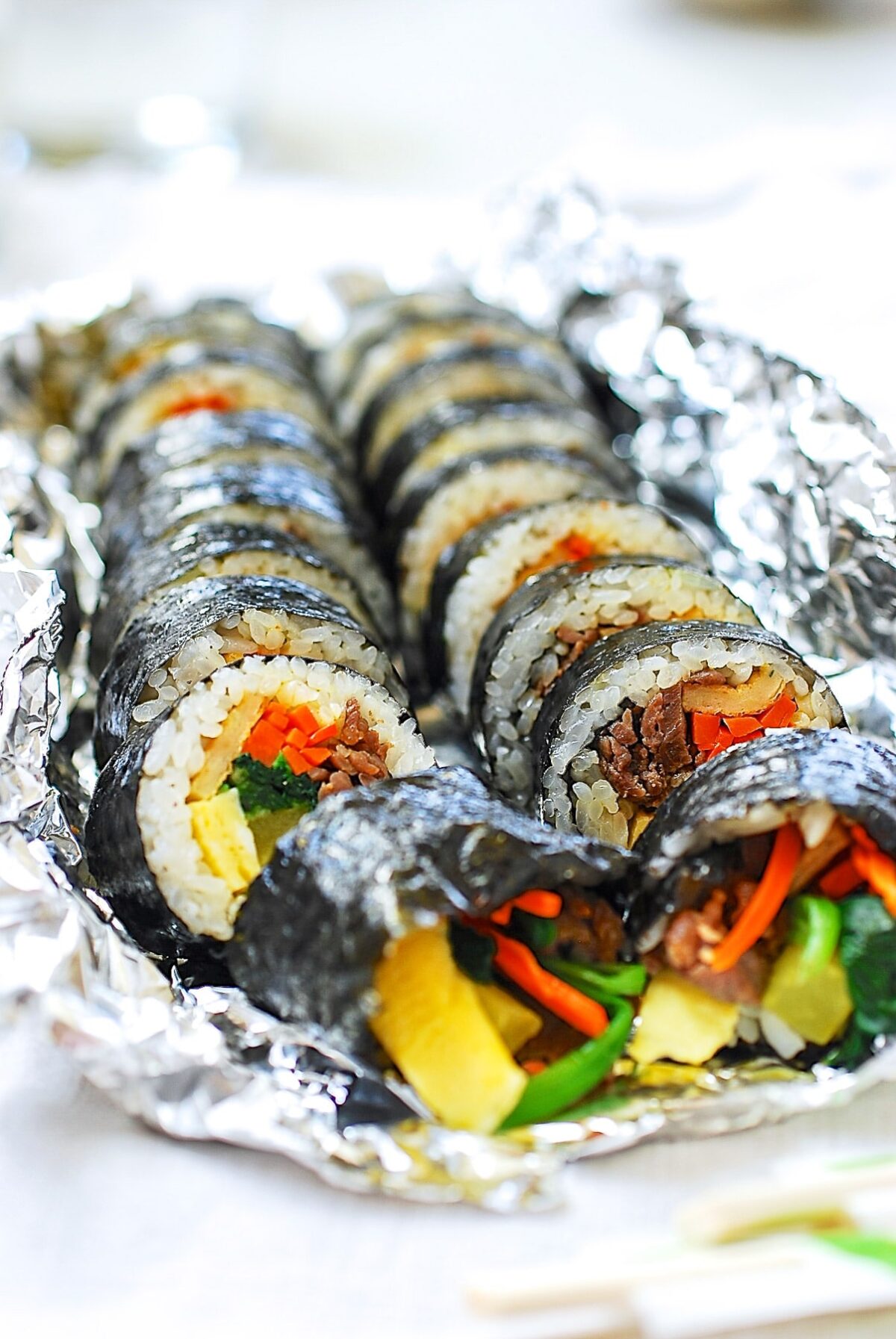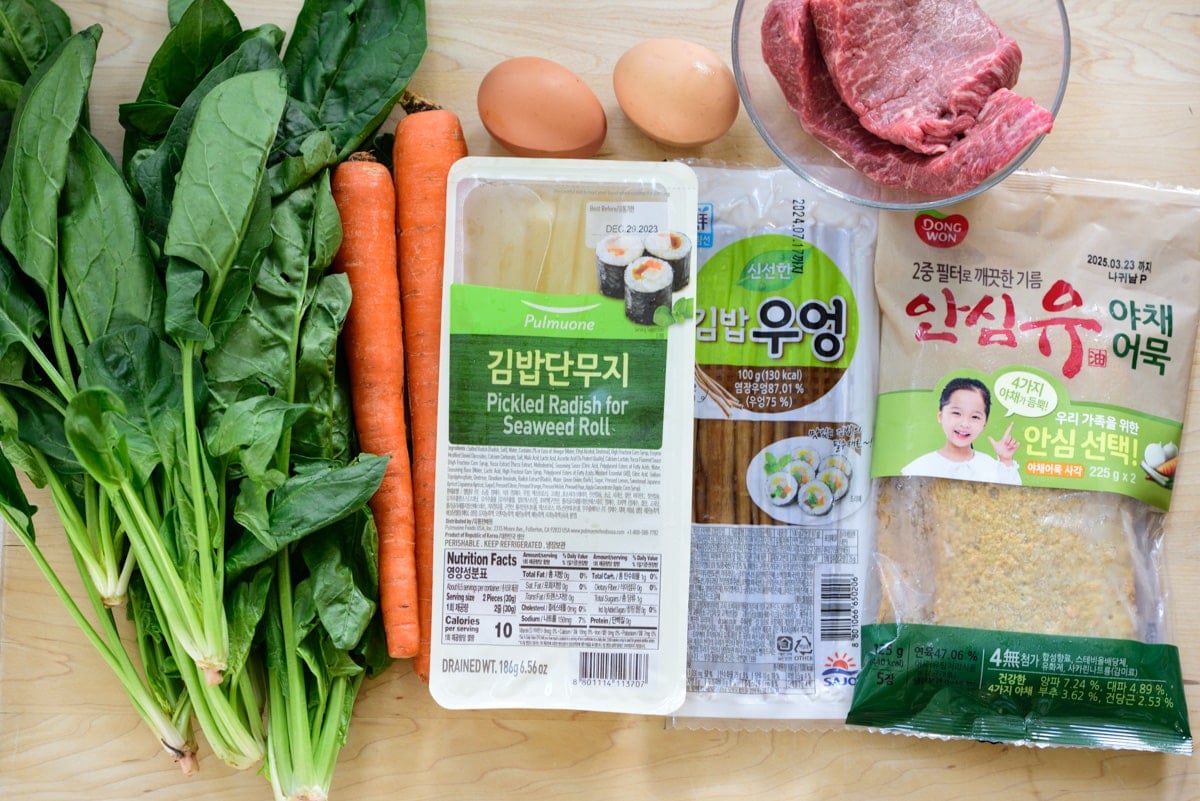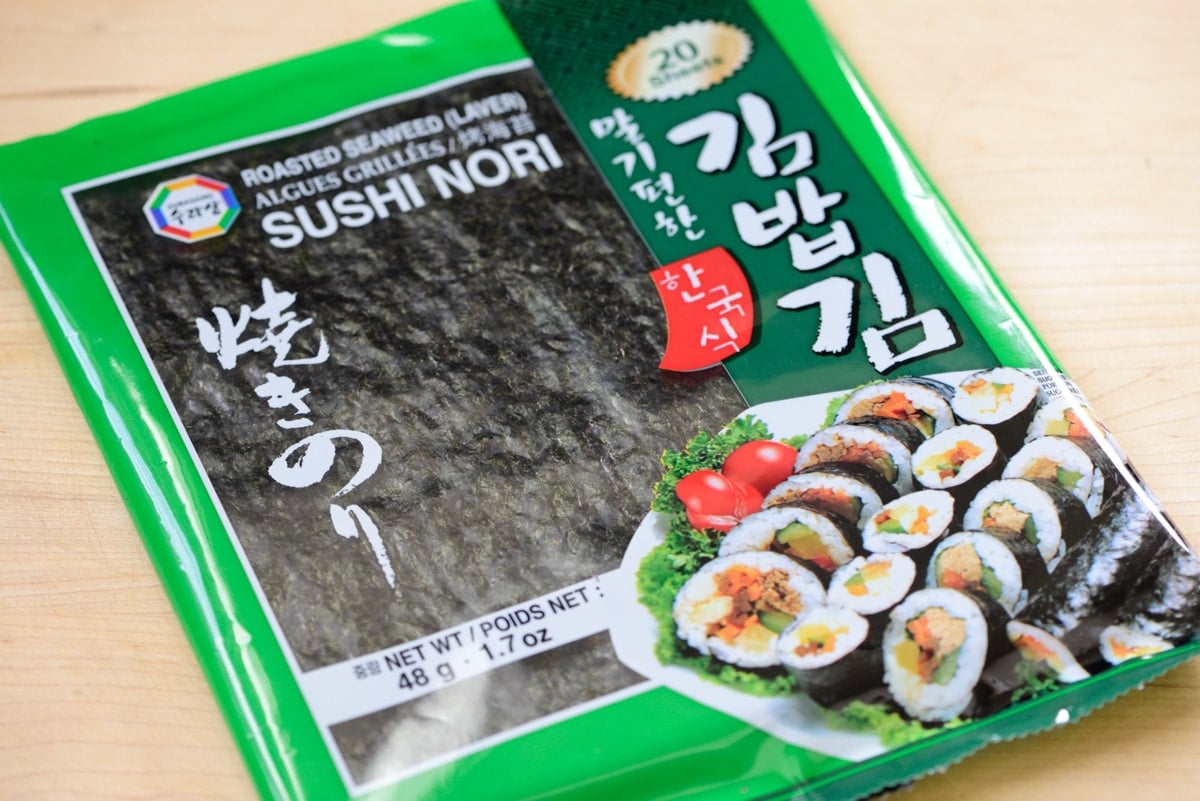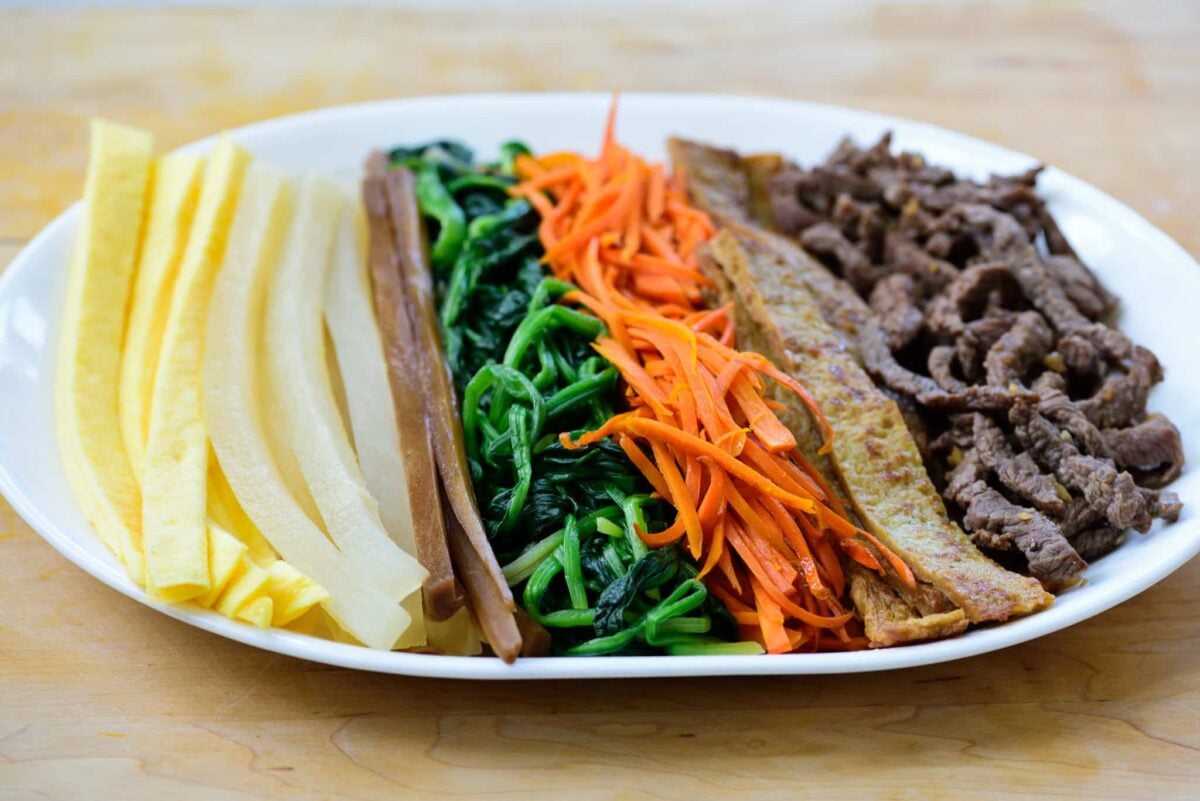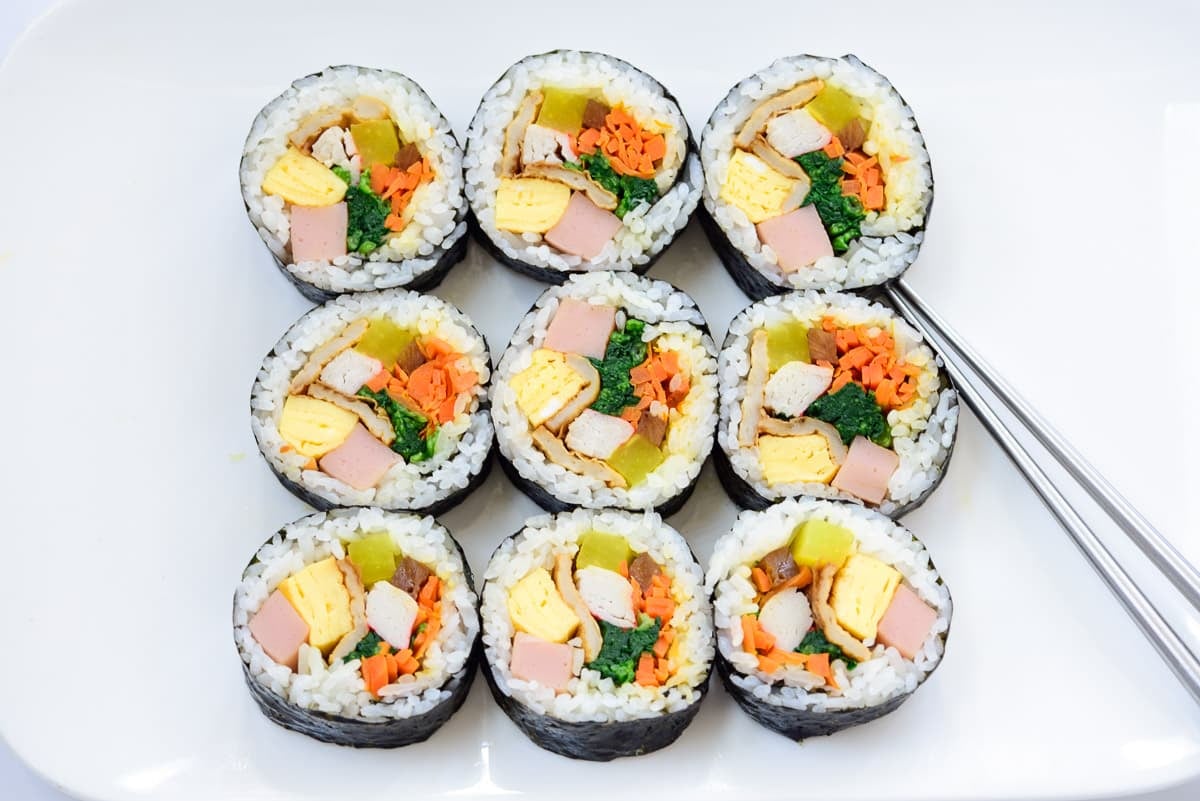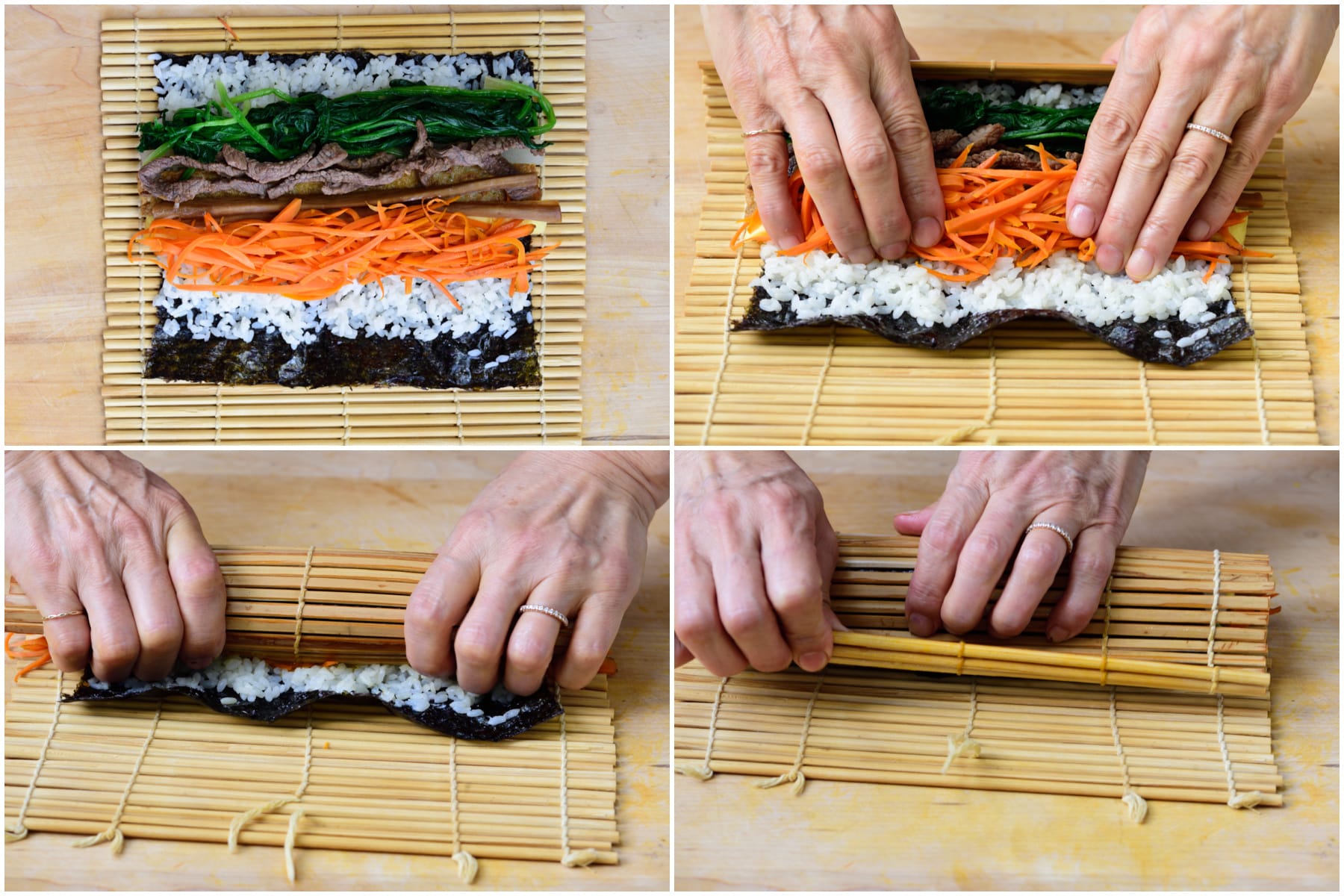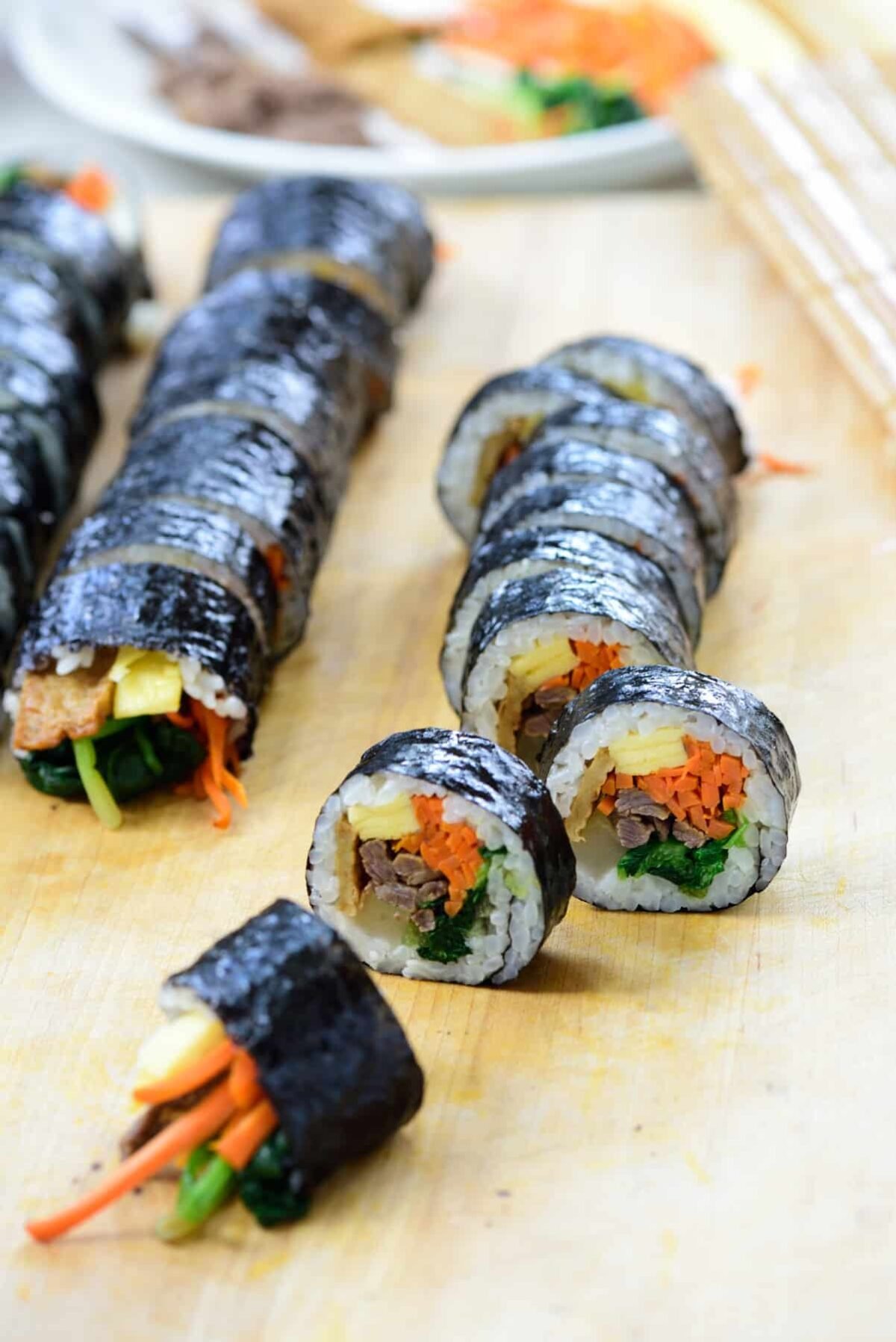Kimbap is Korea’s most popular on-the-go meal! Learn how to make a classic version at home with this recipe with a step-by-step guide!
What is kimbap?
Kimbap (or gimbap, 김밥) is a Korean seaweed rice roll filled with a variety of delicious fillings. Gim (김) is a dried seaweed, and bap is rice. With various fillings, these rice rolls have an interesting combination of textures and flavors.
We all grew up on these rice rolls. Our school field trips, outdoor activities, and family road trips wouldn’t have been complete without them! Today, kimbap is the most popular grab-and-go meal in Korea. You can practically find it everywhere with so many variations.
The best one for me, however, is the classic kimbap my mother used to make for us on our field trip/picnic days. I love making these rice rolls at home. It takes some time to prepare individual fillings and rolling takes some practice, but the process is easy and fun.
Kimbap ingredients
Gim, rice, and some fillings are the three components of seaweed rice rolls. While kimbap fillings are highly versatile with infinite options, I’ve included the classic ingredients in this recipe:
- gim, 김 (dried seaweed, aka nori)
- rice (short/medium grain rice)
- danmuji, 단무지 (pickled radish) – typically yellow but I like white ones without food coloring if available
- beef – any tender cut of beef, bulgogi meat, or ground beef
- eomuk, 어묵 (fish cake)
- eggs
- carrots
- spinach – cucumber is a good substitute. See my Vegan Kimbap for preparing cucumbers.
- burdock root (우엉) – You can usually find packages of burdock root pre-prepared for kimbap usually next to pickled radishes (danmuji). Or, you can make your own, using my recipe.
You can adjust the number and the amount of the filling ingredients to your liking. Omit any ingredient(s) you don’t want or have, and/or add any ingredients you like.
Gim (dried seaweed)
You can find seaweed sheets made for kimbap (or sushi) at Korean/Asian markets or online. They are slightly thick to hold the rice and all the fillings and lightly roasted.
Rice for kimbap
You’ll need short grain rice. For healthier options, I sometimes mix in some brown rice or multigrain rice. Cook the rice slightly drier than normal by using a little less water. Then, lightly season it with sesame oil and salt for a nutty and savory note Korean kimbap is known for.
Each roll takes about 3/4 to 1 cup of cooked rice. For this recipe, I used 1.5 cups of raw rice for 4 rolls. If you cook 2 cups of rice, you can make 5 or 6 rolls.
Preparing filling ingredients
While it takes some time to prepare the filling ingredients, the process is simple. Lightly season each ingredient as all the ingredients, including the rice, will be seasoned. Picked radish and burdock roots are especially salty.
For vegan kimbap, omit beef, fish cake and eggs and add more vegetables, tofu, etc. Also see my Vegan Kimbap.
Variation – Woo Young Woo Kimbap
Woo Young Woo kimbap gained popularity on social media thanks to the Netflix Korean drama – Extraordinary Attorney Woo (summer 2022). Woo is a brilliant attorney with an autism spectrum disorder. She loves and eats kimbap for every meal. She says kimbap is trustable. There are no surprises in texture and taste as she can see all the ingredients at a glance.
So, what’s in Woo Young Woo kimbap? Ham, crab sticks, fish cake (eomuk), braised burdock root (ueong jorim), egg, spinach, and carrot. No beef! These are all very common kimbap ingredients. You can easily try this at home by omitting the beef from this recipe and adding some Korean ham (pan-fried) and crab sticks (imitation crabmeat).
Rolling kimbap
How hard is the rolling process? It takes some practice, but it’s much easier with your second roll. Roll it tightly by putting firm, even pressure with your hands all over the roll. Start with a small amount of each filling if this is your first time.
Tips for making kimbap
- Freshly cooked rice is best for making kimbap. Keep it warm until ready to use.
- Season the rice after all the filling ingredients are ready. Mix the rice with sesame oil and salt while the rice is still hot/warm.
- Keep the filling ingredients as dry as possible by removing excess water.
- Lightly season each filling ingredient. Pickled radish and burdock roots are salty.
- Wet your fingers with water or sesame oil before spreading the rice onto the seaweed to prevent the rice from sticking to your hands. It helps to have a small bowl with water/sesame oil next to your rolling-station.
- Use a sharp knife for cutting your rolls. Make a clean slicing motion and make the full slice in one go. Clean the knife with a wet kitchen towel between cuttings as necessary.
- Store the sliced gimbap in an airtight container. Gimbap is best eaten on the day it’s made, but you can keep it in the fridge and reheat either in the microwave or in a pan. Sometimes, we dip refrigerated gimbap in egg batter and pan fry. A delicious way to revive gimbap!
READY TO ROLL?
More kimbap recipes
Tofu gimbap – vegan gimbap Mini gimbap (Mayak gimbap) Tuna gimbap Folded gimbap Myulchu gimbap
For more Korean cooking inspirations, follow along on YouTube, Pinterest, Twitter, Facebook, and Instagram.
This gimbap recipe was originally posted in May 2012. I’ve updated it here with more information, new photos and minor changes to the recipe.


